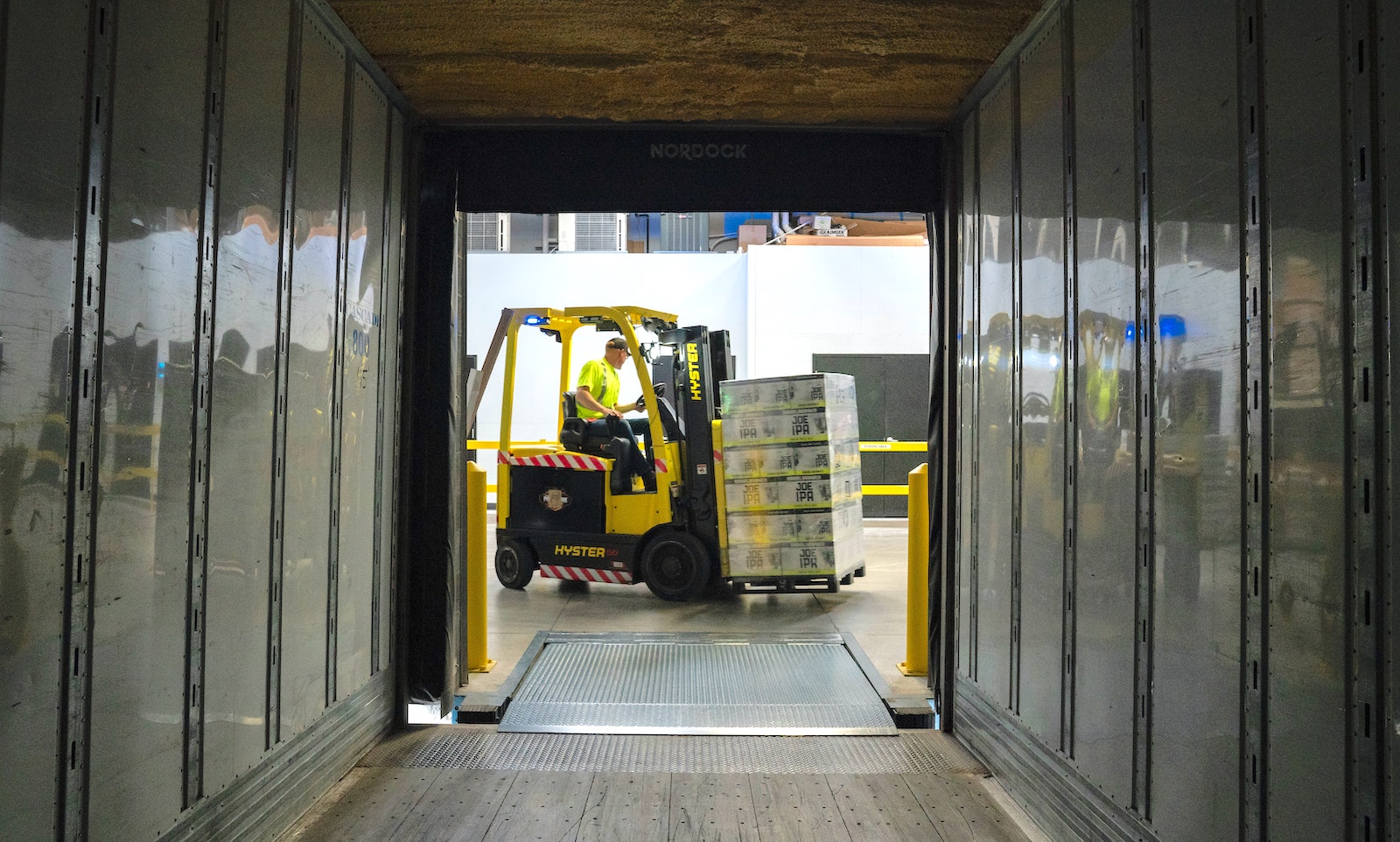Table of Contents
** Minutes
What is multichannel inventory management?
Single channel vs. multichannel inventory management
Common pitfalls of multichannel inventory management
6 qualities of a good inventory management system
2 types of automated multichannel inventory management solutions
Strong multichannel inventory management: ShipBob + Zentail integration
What do you want to learn?
If the case for selling on multiple channels wasn’t appealing enough before, recent months have made it abundantly clear that sellers should be active on more than one store.
Not only are marketplaces like Walmart seeing massive surges in growth, but others like Amazon have rolled out sweeping changes recently, serving as a reminder that sellers can’t put all their eggs in one basket (think Amazon’s FBA shutdown of nonessentials causing shipping delays and disruptions in ecommerce sales during the COVID-19 pandemic).
But expanding to new channels doesn’t always come naturally for sellers. Oftentimes, sellers are challenged with the need to scale operations quickly — and one of the most important tasks involves managing inventory on more than one channel (also known as multichannel inventory management).
What is multichannel inventory management?
Multichannel inventory management refers to the oversight of stock levels, reorders, and inventory forecasting across sales channels. It helps track and plan for inventory turnover, and is where supply meets demand.
Single channel vs. multichannel inventory management
When you’re selling on one channel like Shopify, BigCommerce, or Amazon, you’re usually managing one pool of inventory, one set of sales data, and one set of product listings. Your main challenges are controlling costs and ensuring there are no discrepancies between your listed quantity and what’s actually in your ecommerce warehouse, what’s being shipped, and what’s being restocked.
Each time you add a new sales channel, this process becomes exponentially more cumbersome. Multichannel retailing forces you to factor in various buying behaviours, turnover rates, return frequencies, shipping speeds, and demand across channels — in addition to the usual complexities of inventory management.
You not only have to rebalance inventory according to what’s in your warehouse, but also what’s concurrently listed on multiple channels. For example, if you sell the same products on multiple channels, you’ll need to manage and merge SKUs so you know which are identical products and manage the inventory accordingly.
At any point, orders could be flying in from multiple channels at the same time. It’s easy to lose track of stock levels and rack up backorders. Without a system built specifically for multichannel inventory management, it’s nearly impossible to keep your head above water and prevent capital from getting tied up in inventory as you grow.
Common pitfalls of multichannel inventory management
Poor inventory management is a $2 trillion problem today. This is exacerbated by a lack of automation, centralisation, and visibility as some sellers try to create workarounds. Below are the top issues to be aware of so you can avoid falling into common traps that so often become a sinkhole for businesses.
Overselling
Retailers lose $634 billion to out-of-stock items each year. One major contributing factor is phantom stock, or stock that is listed as available at a storage location within an inventory system but isn’t really present. This can be the result of a typo, inaccurate entry, or lacking software.
Decentralisation — or the lack of software to synchronize sales across every channel and update listed quantities in real time becomes an even bigger problem if you decide to promote a product that’s low in stock; Items could sell out on multiple channels at once, forcing you to cancel orders or suffer other consequences of stockouts.
Overstocking
Overstocks are the cause of $471.9 billion in losses each year in retail. This is usually a result of poor inventory planning. For example, sellers may ballpark and overestimate their anticipated sales volume, leading to higher inventory carrying costs and less room in their warehouses for newer or more profitable items.
Another common issue is when sellers only list a portion of their inventory on one channel and another portion to another in an attempt to mitigate overselling. When a channel shows “out of stock” prematurely, they end up losing out on potential sales.
Poor use of warehouse space
To increase omnichannel fulfilment coverage and fast shipping on every sales channel, many will divide their stock across multiple fulfilment centres. But without insight into how to do this strategically, you could easily face higher shipping costs, longer delivery times and split shipments when a single order is sent to separate warehouses.
Inaccurate forecasting
Poor data quality has a domino effect. And in ecommerce, it’s particularly difficult to backtrack once inventory forecasting goes haywire since business is turning all the time.
It doesn’t help that 54% of sellers still lack forecasting software according to a Zentail survey and try to manually calculate moving targets. Those same sellers often stick to a standard 30, 60, or 90-day forecasting model. They lack centralised, real-time data to catch new buying behaviours and reorder (or scale back) products at a moment’s notice.
High order defect rate (ODR)
Lack of inventory control can lead to canceled orders, incorrect shipments, delivery exceptions, or late deliveries. When these get out of hand, your seller performance will take a hit. On Amazon, an ODR above 1% is cause for suspension.
On Ebay and Walmart, the threshold is 2%. Beyond understocking and poor data quality, an inventory storage system that fails to link together your different warehouses can kill your efficiency.
6 qualities of a good inventory management system
It goes without saying that software can alleviate hurdles and risks that come with running a multichannel inventory business. Most sellers find that they need some combination of the features listed below when evaluating inventory management software for both their present needs and as they grow.
1. Integrations with your marketplaces, warehouses, 3PLs, and apps
The right system will have direct integrations with the marketplaces, vendors, 3PLs, and apps you work with that affect inventory tracking. It should serve as the central command centre, where you have full visibility over the status and location of your stock.
This allows for complete, consistent, and accurate data, which is needed for multichannel inventory management. It keeps your whole team — from your warehouse staff to purchasing managers — on the same page.
2. Near real-time inventory updates
One core component of any ecommerce inventory solution for sellers is the ability to automatically and continually update listed quantities. You should never have to update quantities by hand. When an order comes in, your multichannel inventory management software should immediately reserve inventory for it (even as payment is processing) and update your listing to prevent backorders.
In addition, you should be able to set inventory thresholds or buffers so that once total inventory for a SKU reaches a specific level, it becomes available for purchase on only one channel to prevent overselling.
3. Forecasting
Demand forecasting is foundational to a scalable inventory plan. To be effective, your system needs to be able to account for many more factors outside of historical sales data. Those factors include:
- Lead times
- Holding costs
- Shipping and handling costs
- Manufacturing, product, and work in process inventory costs
- Profit margins
- Sales velocity
Look for a multichannel inventory management system that doesn’t just alert you when stock is running low. Find one that proactively suggests ways to optimise inventory based on new trends, sales variance, and estimated costs or profits on each marketplace.
4. Reorder points and purchase orders (POs)
As your forecasting becomes more nimble, the purchasing process needs to evolve as well. Too many merchants still create POs by hand, then file them outside of their inventory system. This requires someone to then manually update stock levels inside the software.
The ideal multichannel inventory management system includes PO automation. It allows you to create POs on the fly by auto-populating standard information and offering one place to check order statuses (drafts, approvals, rejections, and sent orders). This capability also enables you to set custom reorder points.
You should be able to whip up a PO for any SKU if demand fluctuates suddenly for just in time inventory. This helps keep just enough inventory on hand so you don’t overspend on inventory upfront and all of its subsequent warehousing costs.
5. Reporting and analytics
Inventory plans are always changing to adapt to world events or changes to your businesses. Needless to say, you need to have the right data and distribution metrics accessible at any time to make intelligent decisions. At minimum, your multichannel inventory management software should show how your inventory performed over the last week, month, quarter, and year(s). It should highlight total sales, profit, and more for each channel you sell on, allowing you to identify best sellers as well as slow-moving products.
For day-to-day multichannel inventory management, your software should let you drill into live counts, inventory days on hand, days until out-of-stock, stock out/opportunity costs, inbound shipments, returns, and more.
6. Full kitting and bundling
If you plan on offering multipacks or virtual bundles, make sure your multichannel inventory management software can track stock around the component and master SKUs. For example, if a buyer purchases a bundle containing shampoo and conditioner, your software should subtract one from the shampoo SKU, conditioner SKU, and bundle SKU.
Rather than having to pre-package items as kits or bundles, you can now sell them as single or bundled units—just make sure you’re able to track and route them properly.
2 types of automated multichannel inventory management solutions
While software is the most reliable solution for multichannel inventory management, not all software is created equal. Some systems are cheaper and more restricted in their capabilities, while others are built to support end-to-end operations. In many cases, you get what you pay for.
Basic
There are some free or low-cost options available to small and mid-sized sellers. These are often cloud-based. Some platforms only work with a few channels and are specifically built for certain business types, like dropshippers. Common features include automatic stock updates, order tracking, and alerts when an item is running low in stock. Many offer simple sales reports or cost analyses as well.
Advanced
Robust multichannel inventory management systems can integrate into a multitude of sales channels, services, and software. They’re more scalable and customisable to your business needs. While they offer flexible inventory management tools, they provide many other tools outside of this, helping to optimise your product data, listings, pricing, and other workflows. They play nicely with 3PLs, which can use the data within your software to pick, pack, and ship items as efficiently as possible.
Strong multichannel inventory management: ShipBob + Zentail integration
ShipBob’s integration with Zentail serves as a powerful multichannel inventory management solution for advanced sellers. As ShipBob delivers fast, affordable multichannel fulfilment across all your marketplaces, Zentail ensures that your listings show the right quantities and that your product data is up to snuff.
ShipBob helps fulfil not only website orders but also has a B2B Fulfilment Suite and EDI capabilities, enabling merchants to sell throughout the entire B2B ecosystem, powering retail dropshipping (fulfiling orders placed on big box retailers’ websites) and wholesale shipping (including brick-and-mortar stores), which can connect with all the major retailers.
By partnering with today’s leading 3PL and ecommerce operations platform, you can beat customer expectations, avoid misships, and stop forecasting flukes from eroding your sales.
FAQs about multichannel inventory management systems
Here are some of the most frequently asked questions about multichannel inventory management and software.
Can my ERP serve as an inventory management software?
While ERPs like Oracle, Netsuite, and SAP offer ecommerce solutions, the quality of those integrations often fall short of expectations. Unlike multichannel inventory management tools, they’re built for back-office purposes so they lack the data transformation and processes needed to keep up with marketplace requirements. Read more about ERPs versus ecommerce software here.
How much does inventory software cost?
Multichannel inventory management software pricing can range from free to several thousand dollars a month. Base pricing varies depending on functionality and scalability. Some systems may charge additional fees depending on your order volume, SKU count, and/or number of integrations. Keep an eye out for hidden fees and carefully evaluate which features are crucial for growth.
Which software should I choose?
That depends. Are you looking for basic inventory tracking and automation? Do you need something geared towards warehouse management or something to centrally manage your existing apps and fulfilment centres? Identify the things your staff is spending a lot of time doing or are causing recurring issues, and calculate your cost-savings if you were to automate those processes.
Conclusion
Multichannel inventory management can be a major growing pain for any multichannel business. From potential stockouts to confused orders, there are many ways in which multichannel inventory management can run amok without the right tools in place.
Get ahead of potential issues by identifying operational inefficiencies that will only get worse when new channels are thrown into the picture. Take the time to explore the inventory solutions at your disposal. Whether you choose a basic platform or more advanced solution, like the ShipBob and Zentail integration, know when to invest in multichannel inventory management software to help make the job better and easier.



